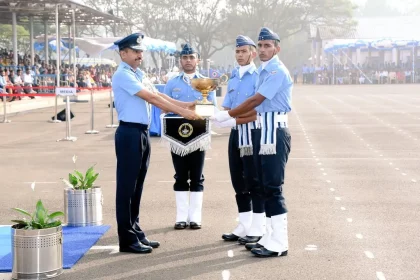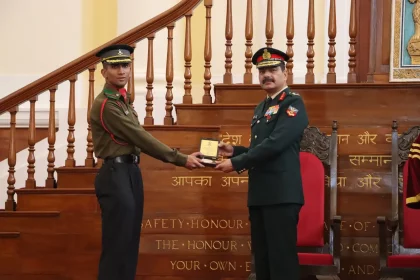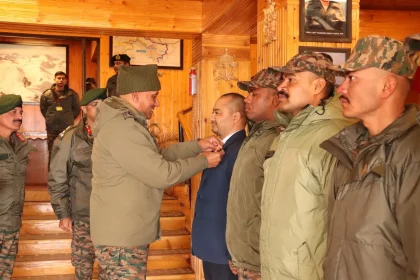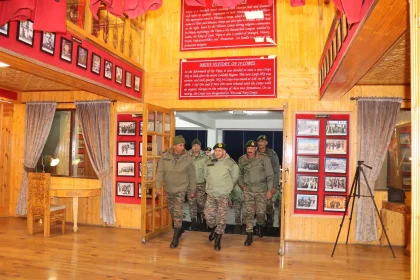1,264 Agniveervayu Trainees Pass Out from Airmen Training School Belagavi
Agniveervayu Trainees Complete 22 Weeks of Rigorous Training at ATS Belagavi.
56 Officer Cadets of Special List–38 Course Commissioned at IMA
Seasoned Soldiers Turned Officers Strengthen Army Leadership Fabric.
Lt Gen Pratik Sharma Visits Fire and Fury Corps, Reviews Key Infrastructure Initiatives in Ladakh
Army Commander Reviews Ladakh Infrastructure, Lauds Civil–Military Synergy.
General Upendra Dwivedi Reviews Security Preparedness During Visit to Fire and Fury Corps
COAS Reviews Security and Operational Readiness in Ladakh.
Indian Naval Academy Set to Host 14th Edition of Admiral’s Cup 2025
Global Naval Sailing Championship to Witness Participation from 35 Countries at INA Ezhimala.
IAF’s 18 Squadron ‘Flying Bullets’ Celebrates Diamond Jubilee at AFS Naliya
Celebrating 60 Years of Valour, Heritage and Aatmanirbhar Bharat’s Frontline Air Warriors.






